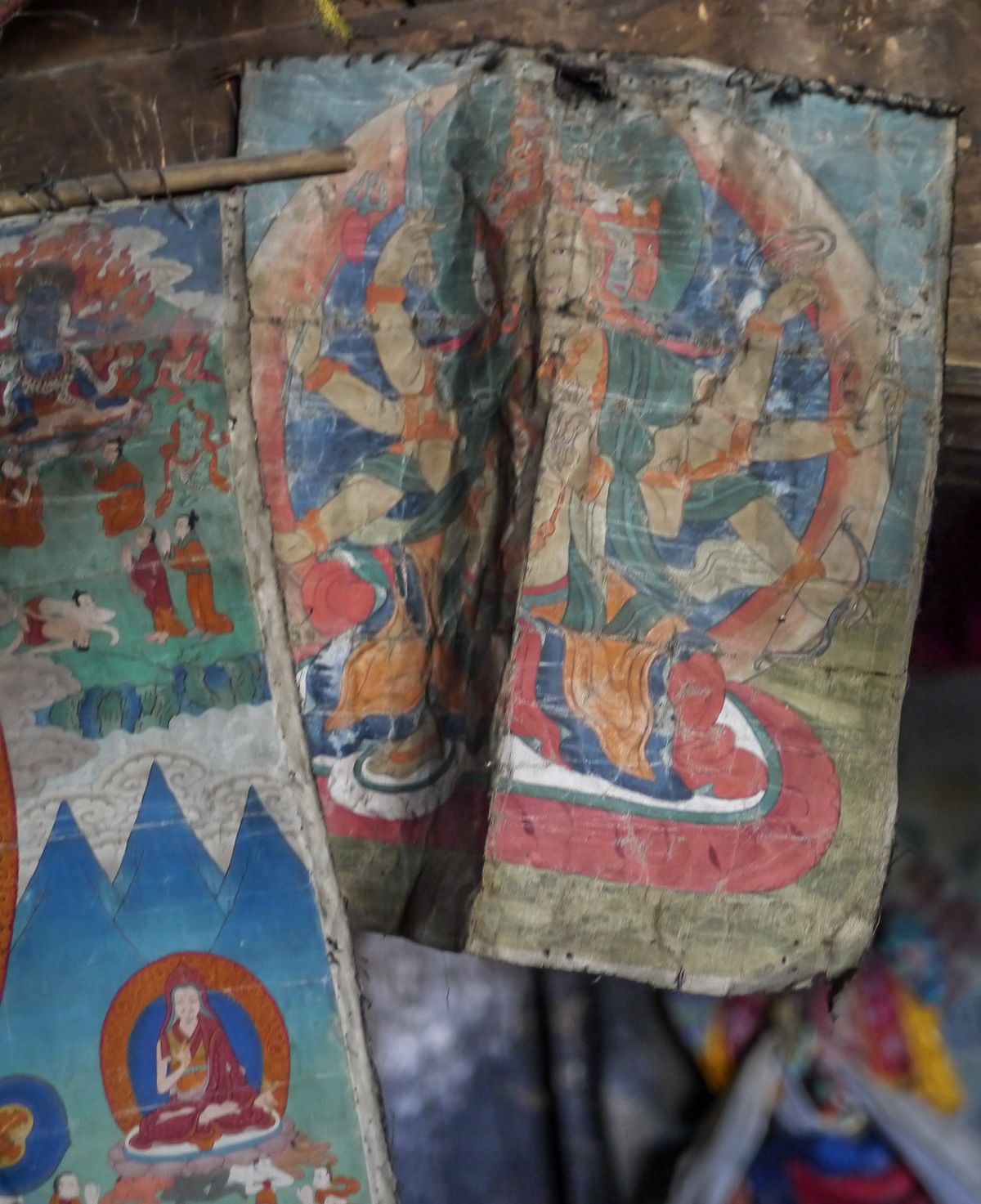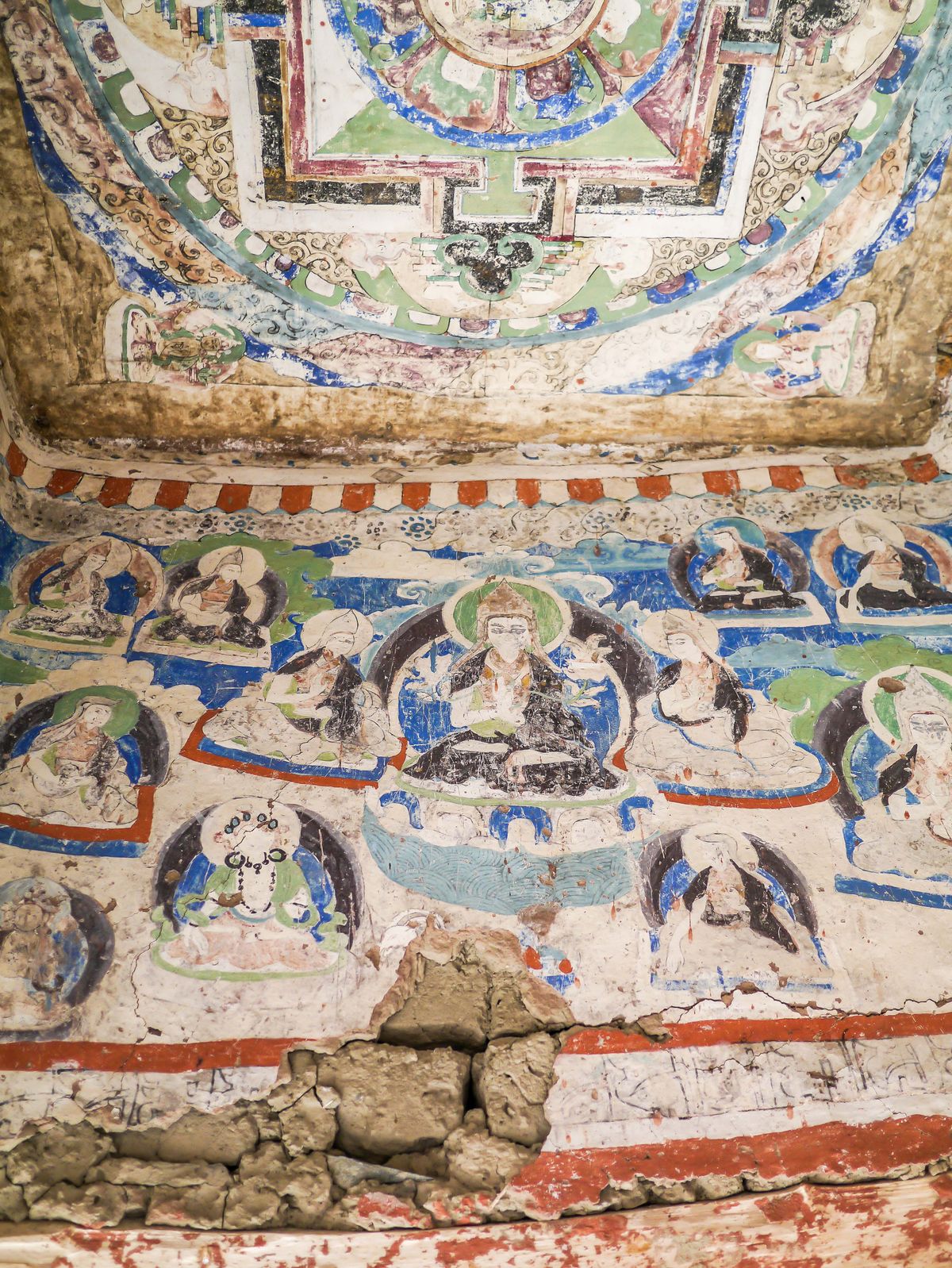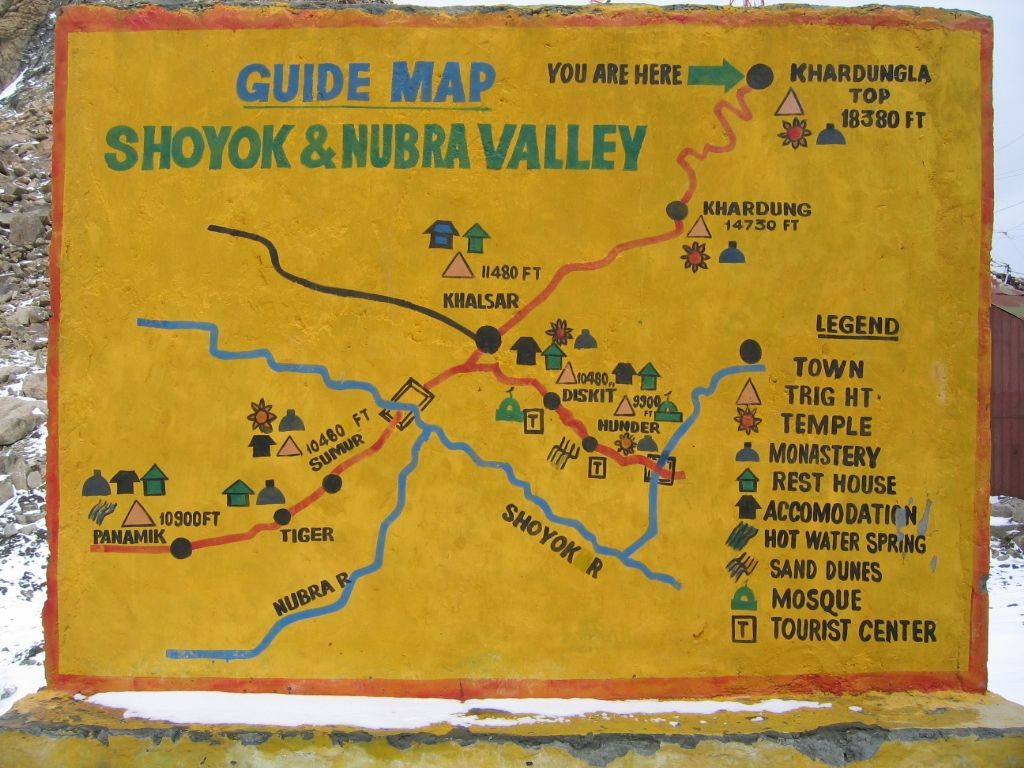About
If you trek up from the village of Tegar to catch a glimpse of the Zamskhang palace in Ladakh, your first impression is likely to be one of disrepair and ruin. The Tibetan palace and the stupas that surround it are crumbling, but the real treasures lie inside the ruins.
Located in the Nubra valley, this obscure part of the Himalayas was a pitstop on the Silk Road, the ancient trade route used by traders and pilgrims to travel from south to central Asia. During their stay, the pilgrims left behind votive clay tablets which are now housed inside and around the small stupas or chortens around the palace. In stark contrast to the white exteriors, the interiors of the chortens are decorated with colorful and and elaborate frescoes, now slightly faded but still beautiful.
Little is known about the history of the Zamskhang, though locally it is said to have been built in the 17th century to house the governor’s family. The structure is abandoned, but inside there’s a prayer room that's still in use. This room is the most striking one in the building and is a kaleidoscope of color, with statues and thankas, silk paintings, decorating every inch.
The structure itself, though in a poor state of repair, is an excellent example of Tibetan palace architecture, similar to the king’s palace in Leh. The massive building has three floors and a line of four balconies on the second story. There is also a terraced open square with a long bench built against the retaining wall. The ruined structure has straight mud walls with perpendicular angles, and uses abundant mortar without integrated boulders. An elaborately decorated stone stove sits in the ruined kitchen. Part of the roof has collapsed so caution should be exercised when exploring that section. Recently there has been talk of renovating the site.
Related Tags
Know Before You Go
To reach the Zamskhang Palace most people will stay in the nearby village of Sumur on the Nubra River side of the valley. The actual ruins are a steep hike from the road, starting at the village of Tegar. This region is reached by traversing the Khardung La, which at 18000 feet is referred to as the “highest motorable pass in the world”. A special permit must be obtained in Leh before the journey can even be attempted.
Delhi and Rajasthan: Colors of India
Discover Colorful Rajasthan: From Delhi to Jaipur and Beyond.
Book NowCommunity Contributors
Added By
Published
May 2, 2017






































































































